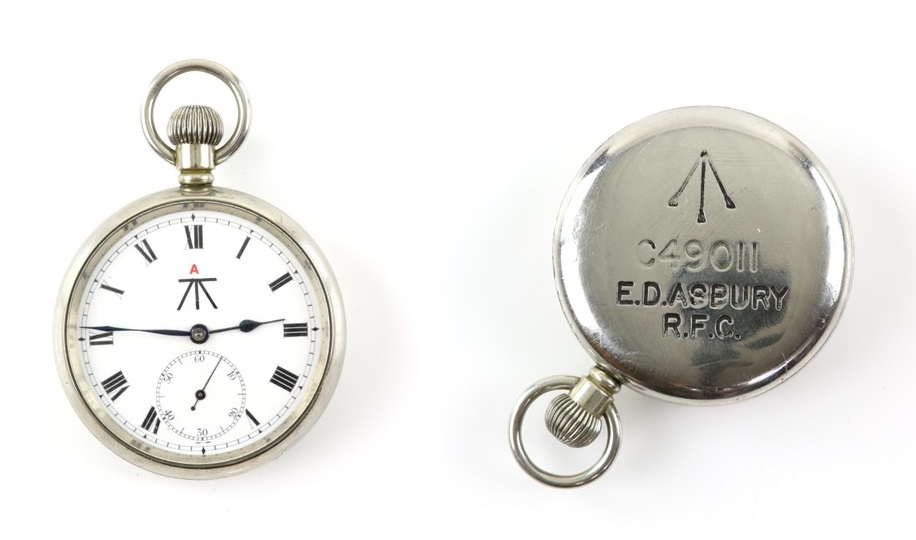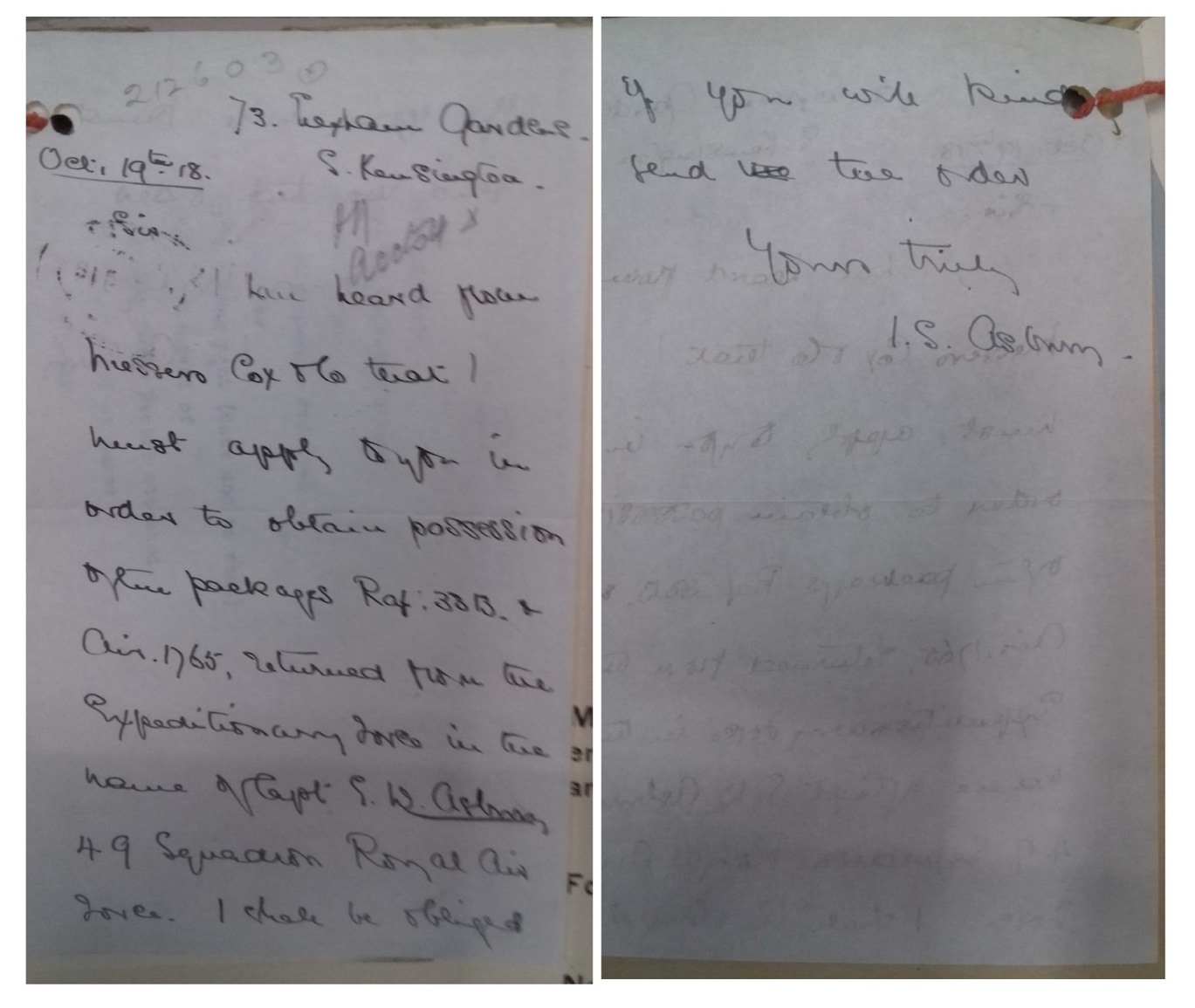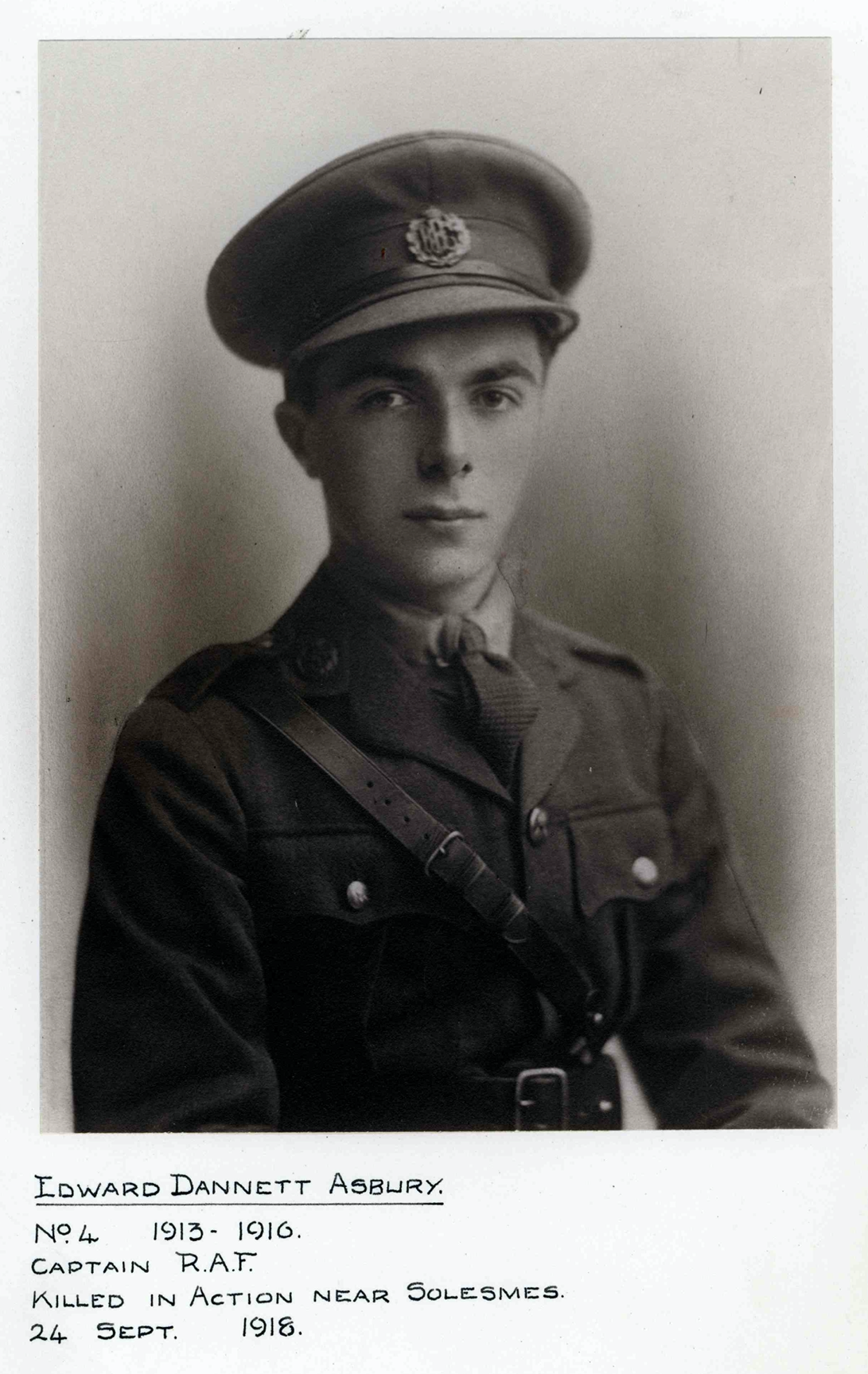 Abraham Lincoln
If given the truth, the people can be depended upon to meet any national crisis...
Abraham Lincoln
If given the truth, the people can be depended upon to meet any national crisis...
 Guildford news...
for Guildford people, brought to you by Guildford reporters - Guildford's own news service
Guildford news...
for Guildford people, brought to you by Guildford reporters - Guildford's own news service
RAF Pilot’s Death Remembered After 103 Years With Auction Of Pocket Watch
Published on: 9 Nov, 2021
Updated on: 9 Nov, 2021
When RAF pilot Captain Edward Dannett Asbury was killed in France on September 24, 1918, he was 19 years old and had been with his squadron for just 17 days. His observer, Second Lieutenant B.T. Gilman, had been in post for just six days.
Their tragic story has come to light again after more than 100 years thanks to Asbury’s Royal Flying Corps pocket watch being included in the auction at Ewbank’s on December 1.
Asbury was born in June 1899 the son of a P&O ship’s captain. He attended Malvern School from 1913-16, before signing up with the Royal Flying Corps, two weeks after his 18th birthday in 1917.
In less than two months he was passed fit as a pilot, joining the General List as a second lieutenant three months later.

Captain Asbury’s service pocket watch. He was killed just 19 days after being posted to his squadron.
He served as an instructor for six months before applying for active service abroad and was sent to France in April 1918. He was promoted to captain on September 13 and posted to 49 Squadron of what had by then become the Royal Air Force after merging with the Royal Naval Air Service.
In early August, the Hundred Days Offensive began, one of the bloodiest battles of the entire conflict and the one that was said to have finally ended the First Word War.
On September 24, Asbury was flying an Airco DH9, a single-engined biplane bomber, a poorly rated machine because of its lack of power. On its return to base, the flight came under attack by an overwhelming force of 50 enemy aircraft. Asbury’s plane was seen going down under control. He was at first reported as missing. It was later confirmed that both he and his observer had been killed..

Letter from Captain Asbury’s mother asking for his personal possessions less than a month after his death.
His school magazine wrote: “He was a boy of adventurous spirit, well fitted by his temperament and his technical knowledge for service in the RAF, in which he was given a commission last year”.
His commanding officer wrote to his parents: “Your son has done wonderful work with his squadron, and his fine leadership and his cheeriness are sadly missed.”
On October 19, 1918, his mother wrote a letter to Asbury’s commanding officer, asking for her son’s effects to be forwarded.
It is likely that among those effects was the pocket watch.
Pilots at the time had no means of direct verbal communication, which meant that these watches played a vital part in co-ordinating raids, becoming chronometric instruments fitted to the instrument panel during flight.
Ewbank’s specialist Nick Orringe said: “First-hand memories of the 1914-18 conflict have now gone, and while the horror and sacrifice still loom large in our collective psyche today, that may not always remain the case.
“That’s why mementoes like these watches are so important, especially at this time of year. They remind us not just of the selfless heroism of those who gave their lives for others, but also of the futility and waste of war and the fact that these people were individuals, some of them extremely young, like Captain Asbury, whose lost futures also blighted the lives of their loved ones.”
The watch is included in Ewbank’s December 1 sale of Jewellery, Watches and Coins with an estimate is £120-£160. The case is inscribed with Asbury’s name and rank.
Recent Articles
- Guildford Institute’s Crowdfunding Project for Accessible Toilet in its New Community and Wellbeing Centre
- Letter: Guildford – Another Opportunity Missed?
- Letter: GBC’s Corporate Strategy – Where Is the Ambition?
- My Memories of John Mayall at a Ground-breaking Gig in Guildford Nearly Six Decades Ago
- Westborough HMO Plans ‘Losing the Heart of the Street’ Says Resident
- College Invests to Boost Surrey’s Economy and Close Digital Skills Gap
- Community Lottery Brings Big Wins for Local Charities
- GBC Housing Plan Promises ‘A Vibrant Urban Neighbourhood’ Near Town Centre
- Hospital Pillows ‘Shortage’ at the Royal Surrey
- Updated: Caravans Set Up Camp at Ash Manor School


Search in Site
Media Gallery
Dragon Interview: Local Artist Leaves Her Mark At One of England’s Most Historic Buildings
January 21, 2023 / No Comment / Read MoreDragon Interview: Lib Dem Planning Chair: ‘Current Policy Doesn’t Work for Local People’
January 19, 2023 / No Comment / Read MoreA3 Tunnel in Guildford ‘Necessary’ for New Homes, Says Guildford’s MP
January 10, 2023 / No Comment / Read More‘Madness’ for London Road Scheme to Go Ahead Against ‘Huge Opposition’, Says SCC Leader
January 6, 2023 / No Comment / Read MoreCouncillor’s Son Starts Campaign for More Consultation on North Street Plan
December 30, 2022 / No Comment / Read MoreCounty Council Climbs Down Over London Road Works – Further ‘Engagement’ Period Announced
December 14, 2022 / No Comment / Read MoreDragon Interview: GBC Reaction to the Government’s Expected Decision to Relax Housing Targets
December 7, 2022 / No Comment / Read MoreHow Can Our Town Centre Businesses Recover? Watch the Shop Front Debate
May 18, 2020 / No Comment / Read More










Recent Comments